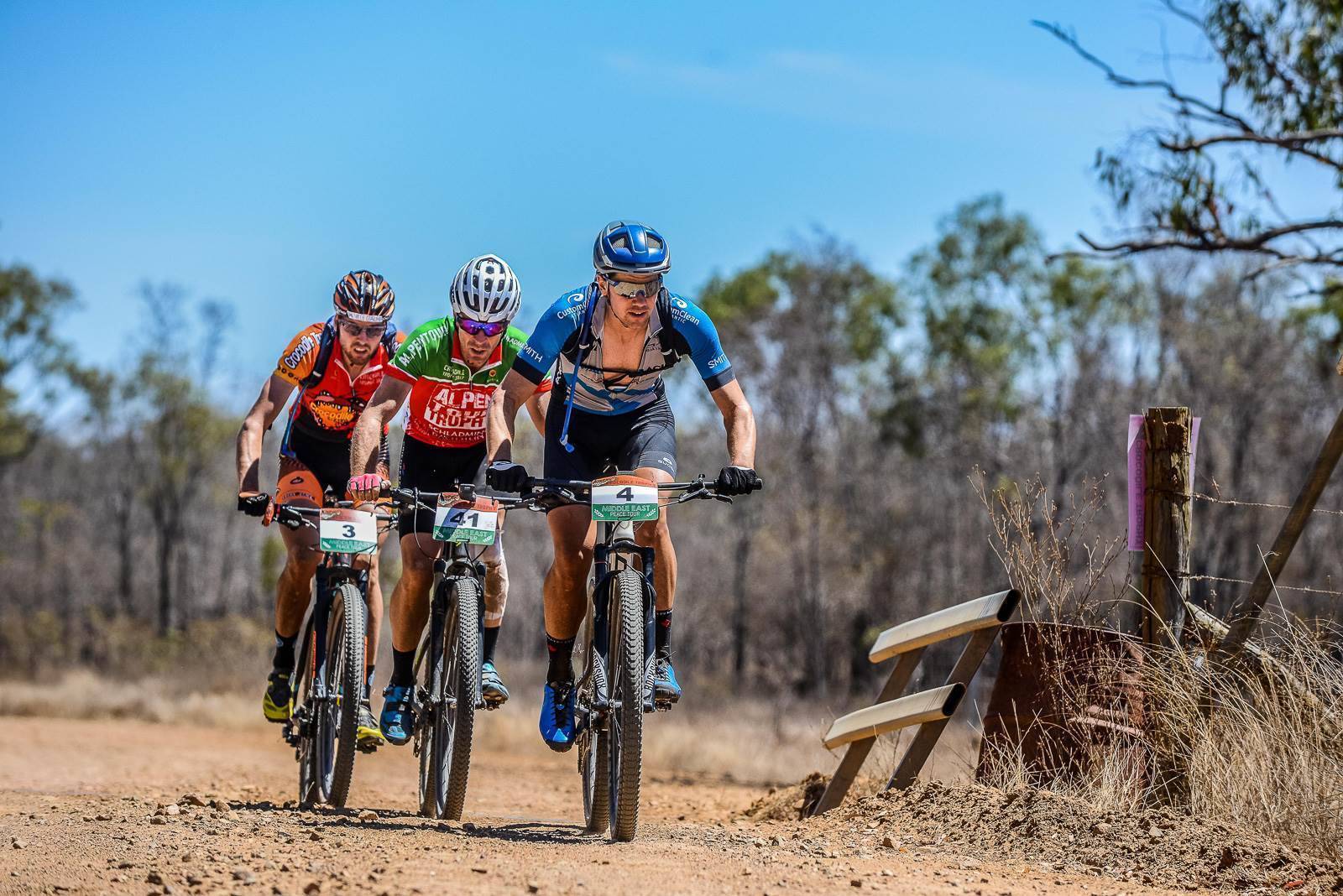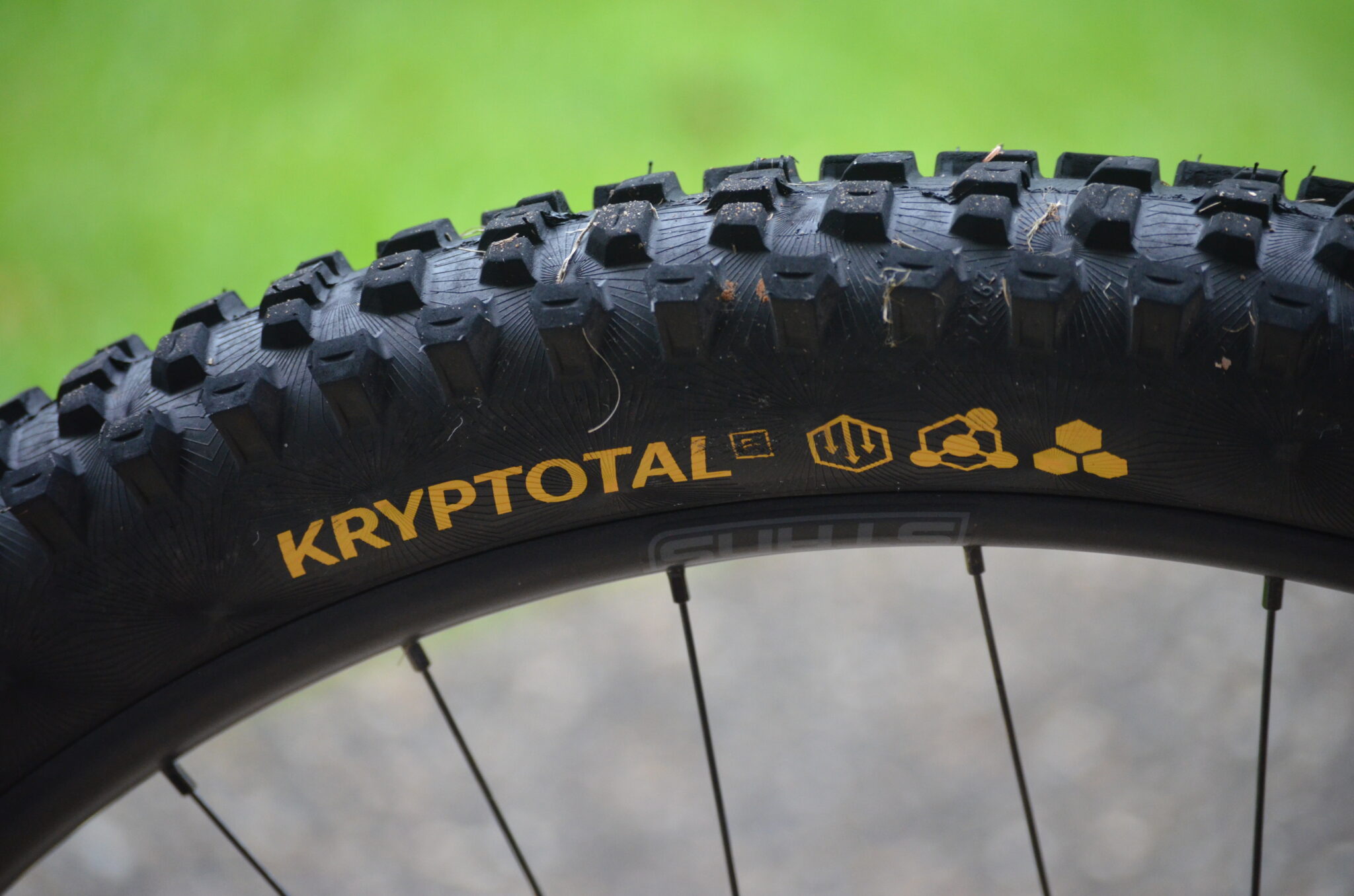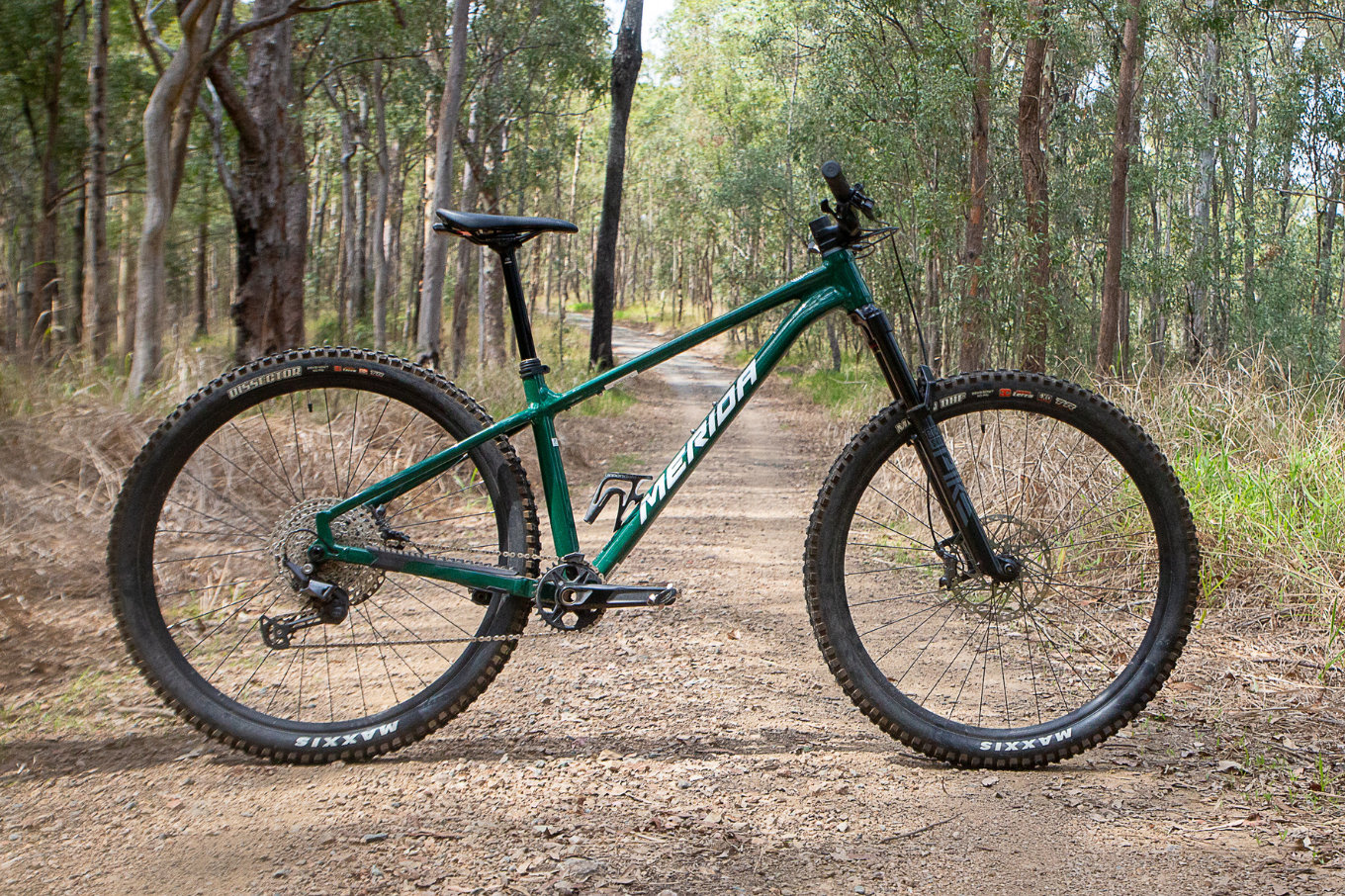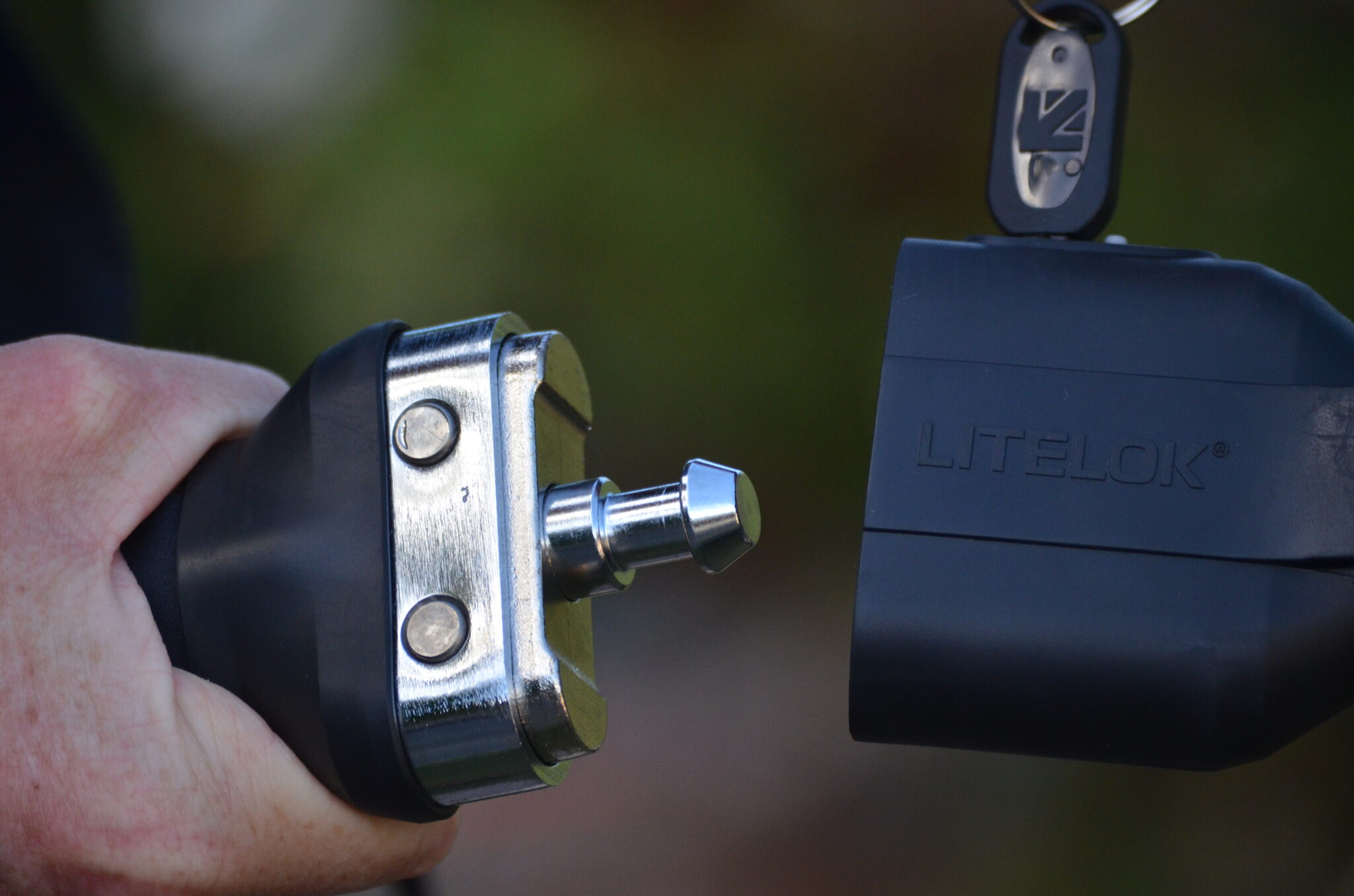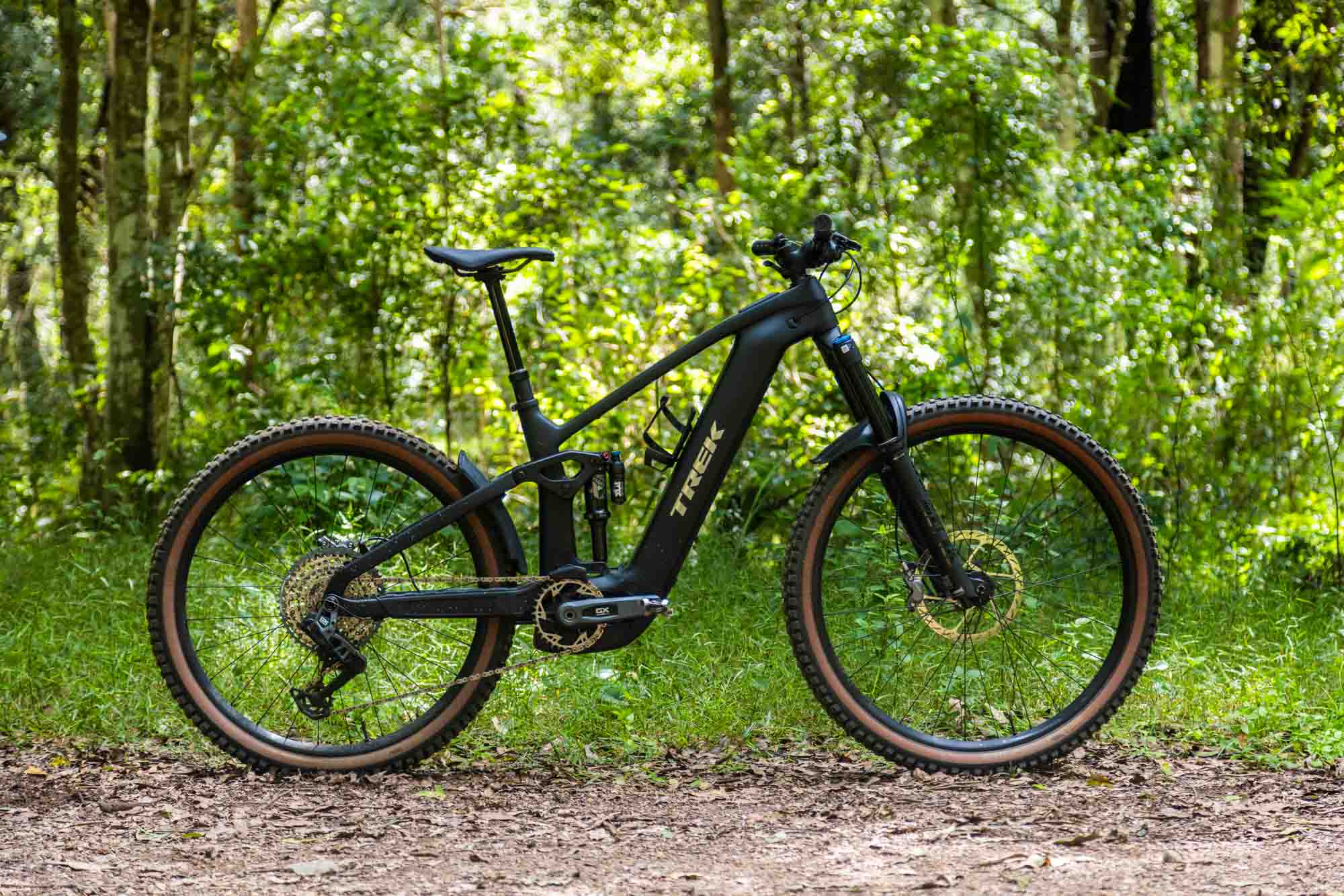Inside the Crocodile Trophy
“Have you done the Crocodile Trophy?”
The question hung in the air. Had I done the Crocodile Trophy. It’s a question I had been asked many times, and my answer never seemed to leave people happy or impressed. This time, I was standing in the corridor of a Polish school in Istebna, right near the border of the Czech Republic and Slovakia. The gentleman asking me was Czech. We were both covered in mud, waiting to get to the showers after the first stage of a four day mountain bike race in the Polish mountains. It was school holidays, so desks were moved aside and riders rolled out bed rolls and sleeping bags on the class room floors as budget accommodation.
It was 2009, I had been riding and travelling around Europe and North America, working when I needed to, and riding and racing my bike in marathons and stage races as much as I could manage, financially and physically. But, no, I hadn’t done the Crocodile Trophy, the huge stage race in my own backyard.
My answer didn’t elicit much of a response from my shower queue companion. He looked a little unimpressed, and the turn of his shoulder simultaneously gave me a good indication of what he thought while also leap frogging me in the queue in a way that only a European can manage.
Why would I travel the world and enter marathons and stage races, if I hadn’t raced one of the oldest and hardest in my own country? This seemed to be the unspoken question that everyone’s look gave me when my answer displeased them. It began to eat at me.
Fast forward two years and I was in the Salzkammergut for a marathon race, and an email popped up from a team mate – do I want to do the Crocodile Trophy this year? I was in Austria, the home of Crocodile Trophy race organiser Gerhard Schoenbacher, and had been at his sister event the Alpentour Trophy just weeks earlier. It seemed like a simple answer. Yes, let’s do the Crocodile Trophy.
Words: Mike Blewitt Photos: Regina Stanger, Igor Schifris and Mike Blewitt
What is the real Crocodile Trophy?
The Crocodile Trophy has evolved far more than the prehistoric beast it is named after. While starting as a three-week crossing of Australia from Adelaide to Darwin, the race now lives in Tropical North Queensland, starting in the rainforests behind Cairns and finishing on Four Mile Beach at the resort town of Port Douglas. Those who raced the first edition in 1995 would barely recognise the race today – although many characters remain the same.
The race in 2011 was 10 days, and took riders well into the outback. Some days were long, and others were longer still. We raced alongside Tour de France professionals, and the hardship of racing in the stark environment west of the Great Dividing Range forged strong bonds both with team mates and new-found friends. Since then, the race has dropped in days and distance, and in 2017 it was an 8-day race which travelled about 695 kilometres.
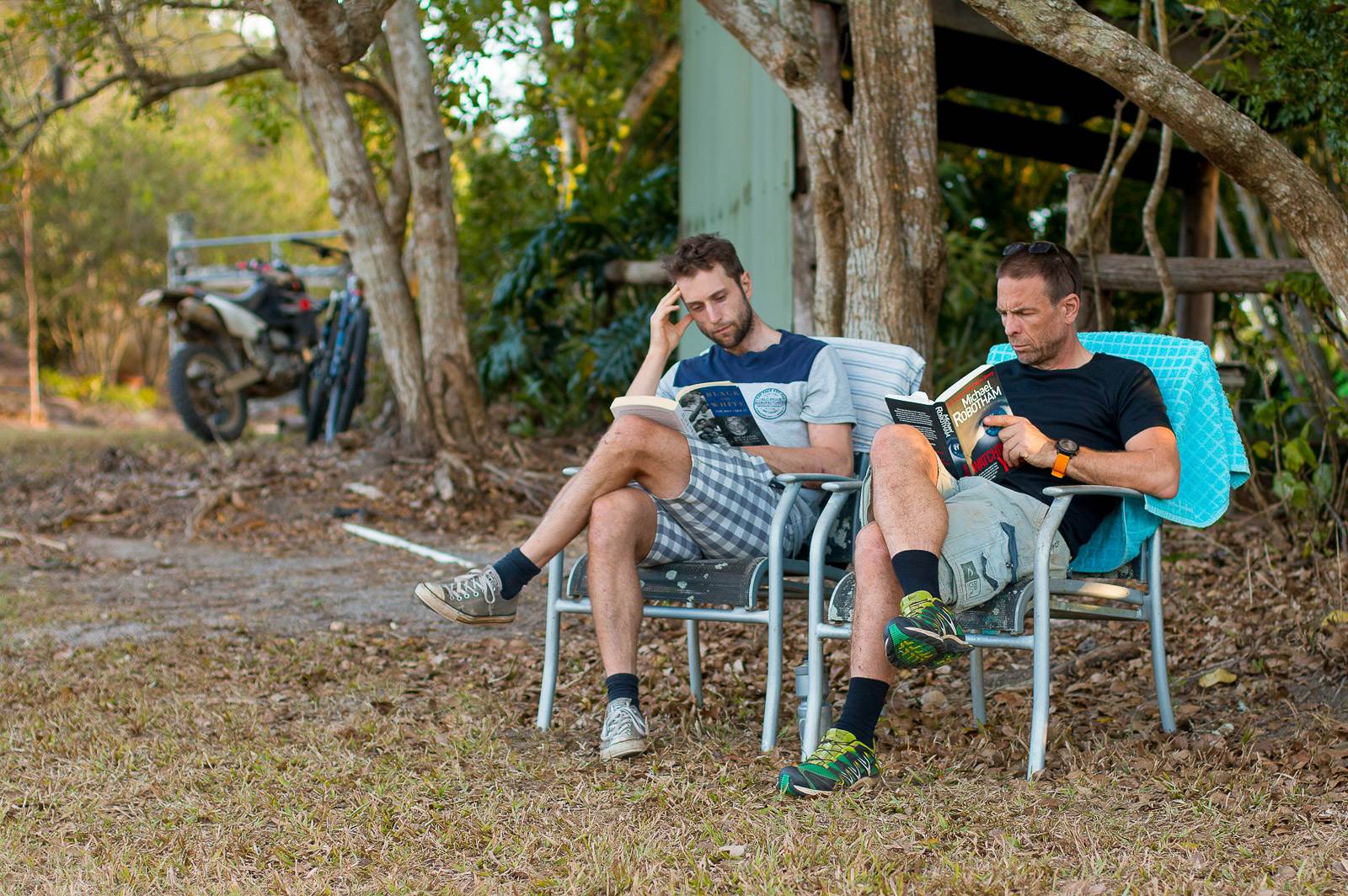
Grant Webster competed in 2014 and was back in 2017 to make amends, after failing to race how he wanted to previously. A well-rounded cyclist, Webster believes the Crocodile Trophy is up there with a list of events that any Australian cyclist who claims to be a true all-rounder should knock off.
“I think you’ve got Melbourne-Warnambool, Grafton to Inverrel and National Champs on the road,” said Webster. “Then the Austral Wheel Race, Bendigo Madison and Tassie Carnivals on the track. Plus the Alpine Classic and a 24hr mountain bike race solo, and maybe Wildside and of course the Crocodile Trophy. If you can do all those before you hang the bike up, that’s a pretty good run.”
The field was small in 2017, the date was brought forward to September instead of the tradtional October date to tie in with the Mountain Bike World Championships. For me, it was a great reason to ride and race my bike for 8 days after the World Championships, but I wanted to know what the experience was for others, and if the Crocodile Trophy matched its reputation.
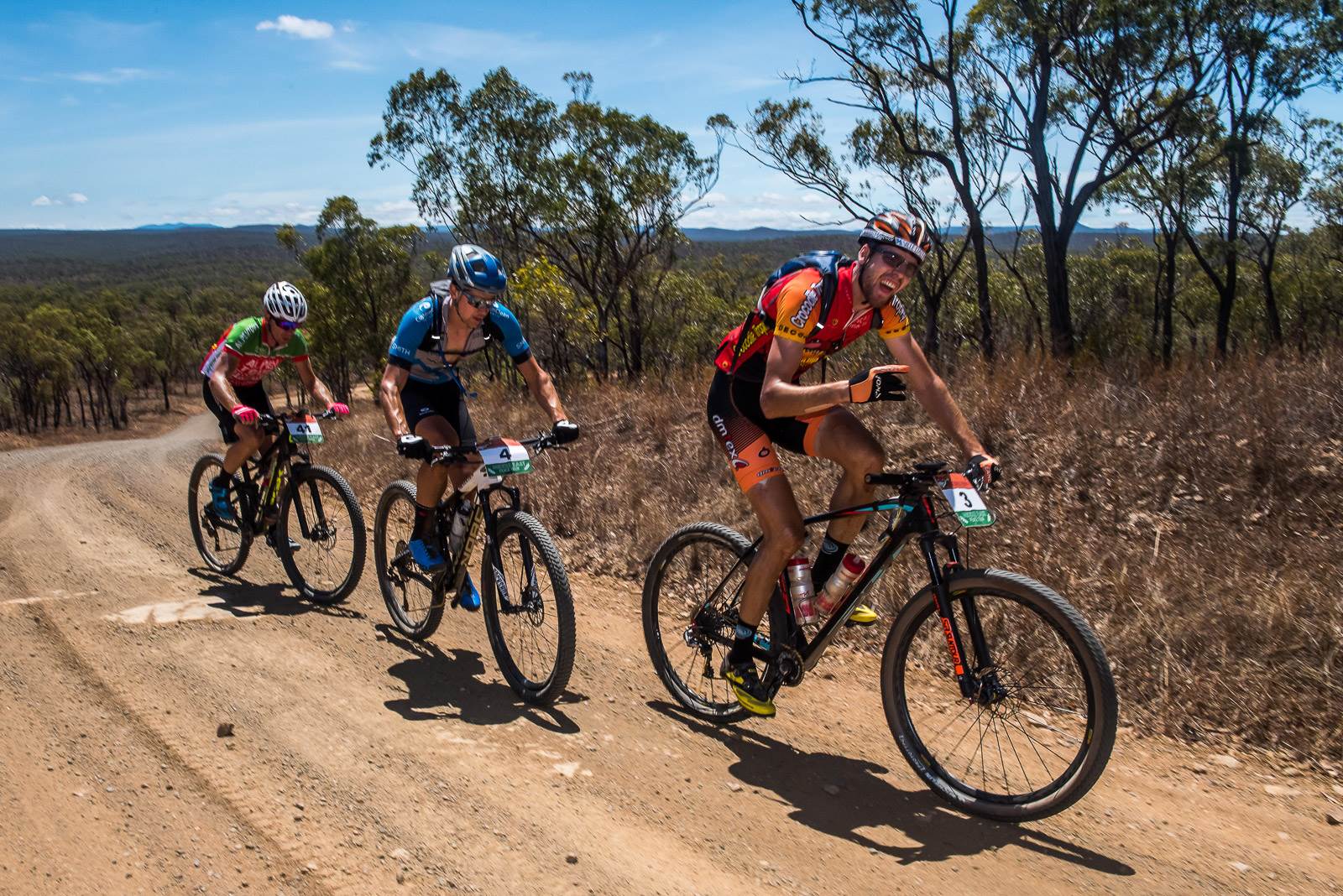
Haley Smith
Norco Factory Racing
Haley Smith won the elite women’s race, and was actually the only elite woman in the field, something that has happened more than once in the race’s history given the ferocious reputation of the Crocodile Trophy.
“In my opinion there aren’t enough women in mountain biking in general,” said Smith when asked whether she thought the Crocodile Trophy’s repuation as 8 days of torturous racing was deserved. “Something like this can be pretty daunting. I don’t know many women who would be comfortable coming to an eight-day stage race and feeling empowered enough to do it.” That goes for a lot of riders – riding your bike off road for eight days straight can seem overbearing. But it’s not as hard as people think.
“You don’t need to be a full time athlete, or a professional or an expert rider to come and do this. I don’t think there is anything more empowering than being on a bike and challenging yourself in this way. I’m sad that there aren’t more women here, but I’m hopeful that in the future there will be more. I don’t know how I can effect that change, but I’m hopeful that I can help get more women on bikes,” finished Smith, as we sat under shade at Wetherby Station, enjoying views across to the range. As the only elite woman, Smith is finding her own race each day.
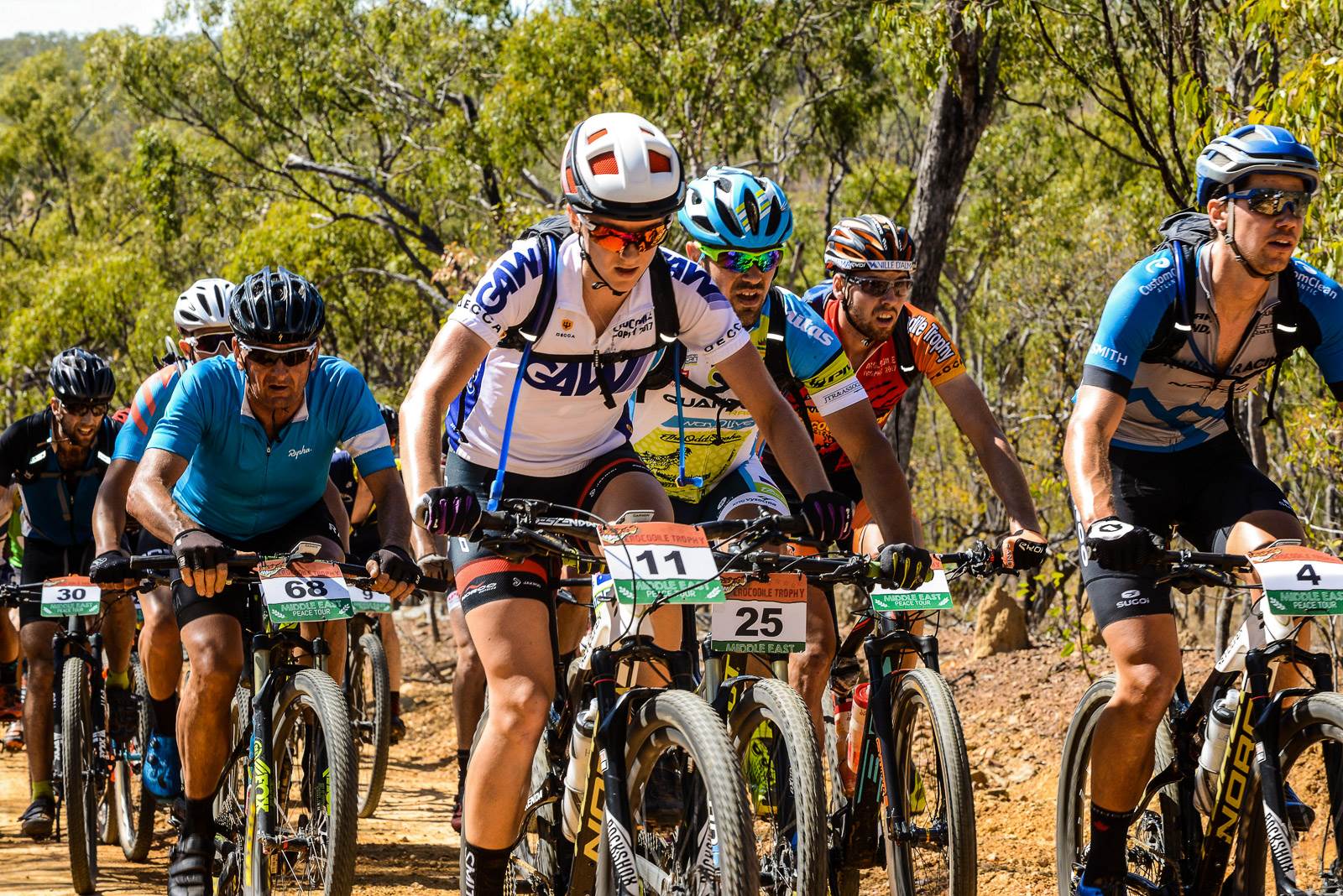
“I’m definitely pushing myself pretty hard each day to try and stay with the men who are much faster than me. The biggest thing I’m learning is that you really don’t have a limit. Any limits you place on yourself are invented in your brain. I think I’m finding a new limit each day, which is a little scary but really rewarding too. I think I’ve set 3 or 4 different critical power number personal bests over my lifetime during this race, so it’s been hard!”
As a World Cup XCO racer, Smith trains extensively with her boyfriend Andew l’Esperance so they can be in top shape for the World Cup circuit, and especially for World Championships. And some of their early season training actually planted the idea of the Crocodile Trophy in their heads.
“We do quite a lot of hours, and quite a lot on the road. In January we were in Hawaii and did these two massive weeks of riding. We came home from it kind of feeling a bit invincible. After we had a week of recovery we were looking for the big volume challenge. Our thoughts immediately went to stage racing – as where else do you get to race for 20-30 hours?”
“We looked at the UCI calendar and we saw that the Crocodile Trophy was a week after World Championships and in the same city. We emailed the organiser and it went from there. It was a pretty snap decision – which is unlike me – we just kinda went for it. We didn’t think about it too much between booking it in February and coming here in September. Throughout the racing year we’d get a bit excited thinking about it but would have to put it out of our minds for a bit.”
Smith then reveals that the Crocodile Trophy is actually her first real stage race. As a Canadian, she lives in the land of the BC Bike Race and Singletrack 6 – but they tend to clash with World Cup commitments.
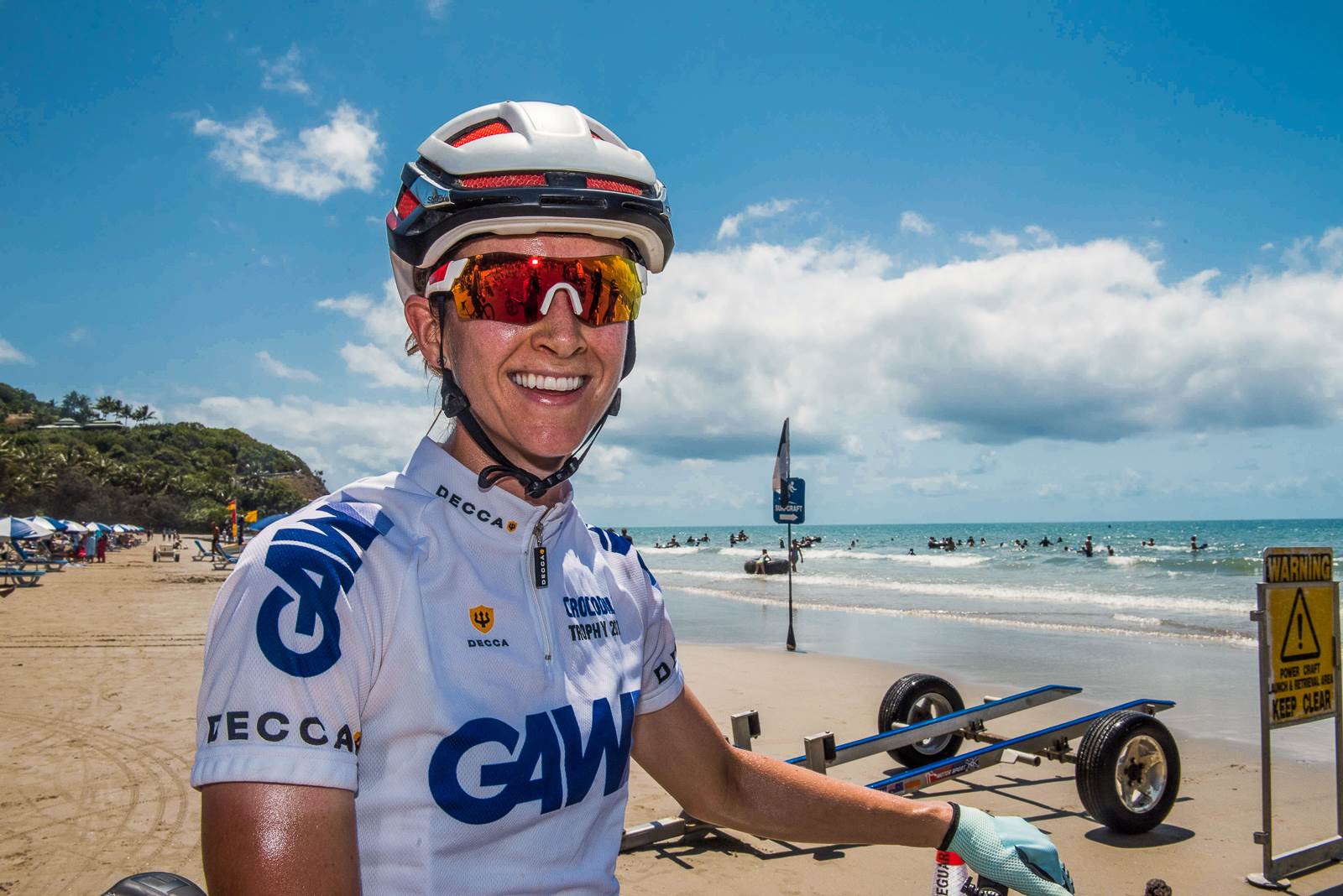
“I haven’t ever really thought of stage racing before. I have been mountain bike racing for six years but I still feel very new to it. So this has opened my eyes a lot and I would definitely consider more stage races. Prior to this I had never really given it much consideration. But BC Bike Race is one I want to do in my life. Everyone is talking about The Pioneer in New Zealand and that sounds pretty cool too. For the most part the UCI points at an adventure like this aren’t that important to me, but they are a bonus. I really enjoy the epicness and the adventure, and that’s what draws me to the Crocodile Trophy.” Over the preceeding days we have raced in the rainforest, in dry open scrub and in eucalypt forests. We’ve crossed deserted rural properties and plunged through cool rainforest streams. While the word epic is often bandied around for mountain bike events, the Crocodile Trophy does justify the use of the word.
I have to ask Smith, does that option of seeing more create part of the appeal of races like the Crocodile Trophy? After-all World Cup racing tends to be about practicing a course, recovering in your hotel, then racing and going home.
“When we were here in 2016 for the World Cup we didn’t really get a chance to see anything. We were really only here for 8 days. So I was really excited to see more of the country. We do get to travel a lot with World Cup racing, but unfortunately we don’t get to see many of the places we go to as we are so focused. So this was an awesome opportunity to travel and see a bit of the wildlife and outdoors. It’s been really fun.”
Haley Smith rides for the Norco Factory Racing team, and Norco Bicycles have a tag line of ‘Adventure begins here.’ But so many Canadian pro cyclists seem to live for mountain bike adventures beyond their racing anyway – and Smith admits that the opportunity for a bit of an adventure was a big part in why she and l’Esperance came to the Crocodile Trophy.
“We are racers who thrive on adventure training. We both really love epic road rides, epic road camps, and challenging stuff that is more of an adventure than specifically performance focused. The adventure part of this has been awesome, and that’s one of the biggest motivators for me for why I ride.”
Andrew L'esperance
Forward Racing – Norco
Andrew l’Esperance was at the front of the bike race every day, vying for stage wins with countryman and race leader Leandre Bouchard. Like his girlfriend Haley Smith, the Crocodile Trophy was about finding an adventure after the pressure of World Championships.
“I feel like we were looking towards Cape Epic and it wouldn’t work. But the Crocodile Trophy lined up really well with our schedule, especially with the date moved to September. At the end of the season if we were completely smashed afterwards it wouldn’t matter – we’d have time to recover,” said l’Esperance. This is something the Crocodile Trophy has provided for years, a fun adventure for riders from both road and mountain bikes to do at the end of their international season. But it’s not uncommon for visiting riders to get in over their head, with the distance, or Australian heat.
“We saw the distance, but our main focus was World Champs when coming to Australia. Until our race was finished on Saturday we didn’t really give it that much thought. Maybe we were a little cocky and just figured we could handle it. But in the days leading up to the race we really wondered what we had got ourselves into with 660km, heavy duty climbing and 8 days.”
The reality is l’Esperance and Smith made short work of the Crocodile Trophy, showing the class that netted them career best results at the XCO World Championships the week prior. But as l’Espernace said, the Crocodile Trophy was really about doing something unlike the international XCO scene.
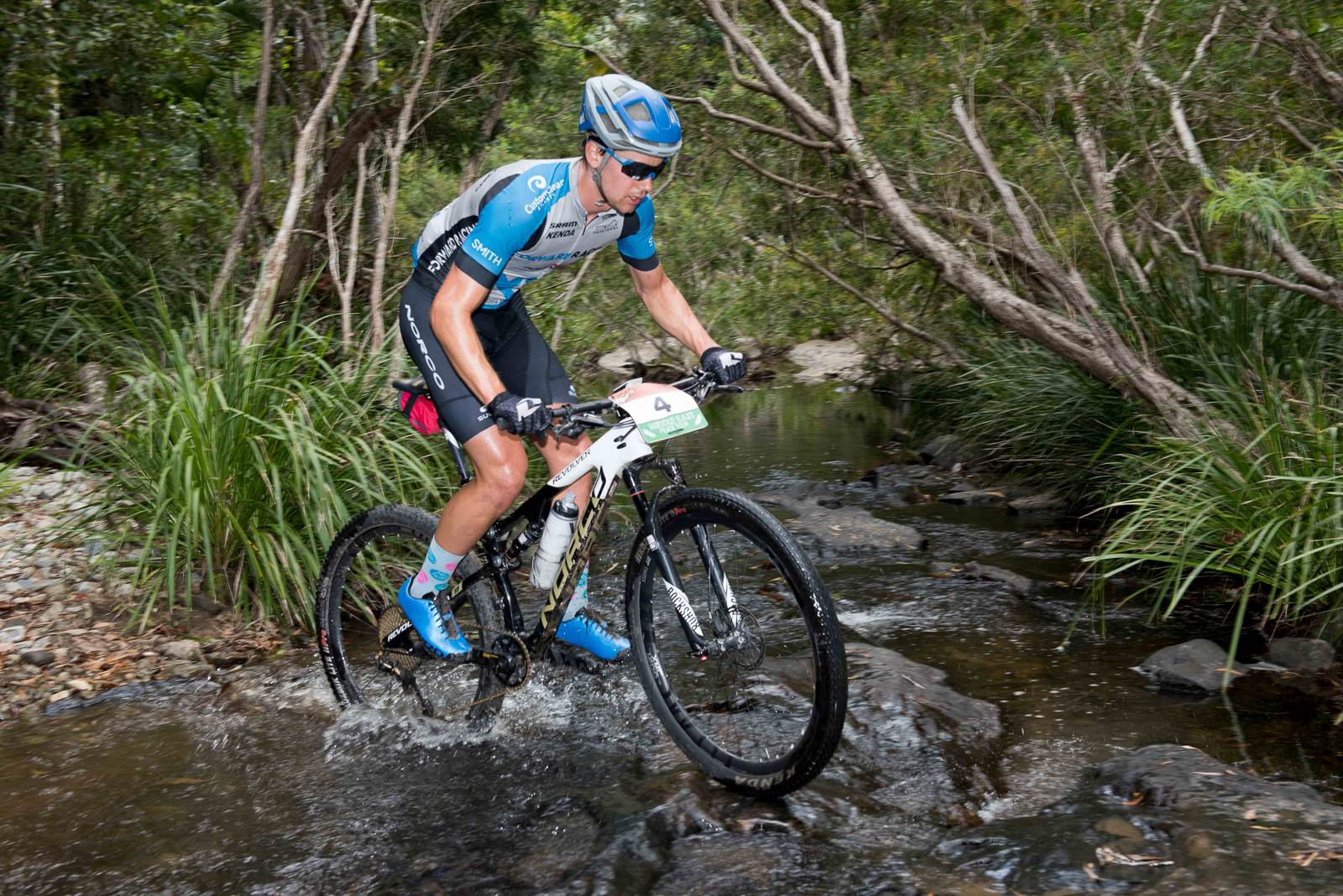
“I really enjoy the whole experience of travelling around and camping, and the adventure side of things. I enjoy not really knowing what’s on tape every day. It’s all just new. Mountain bike stage racing is new and fun compared to World Cups.”
In 2014 the UCI made the Crocodile Trophy a UCI S1 stage race, meaning it carried international ranking points and guaranteed prize money for stages and for the overall positions. Much discussion has been had since then on whether it’s a requirement for the race, but it was of interest to l’Esperance. A few months before the 2017 event the race dropped to an S2 ranking, so with less points on offer and lower prize money.
“Initially this was an S1 and points were very good. As an S2 they are still pretty good. Getting those points is important, if you look at the top 30 men in a World Cup a good chunk of their points come from stage races like Cyprus Sunshine Cup, Cape Epic, those sorts of things. Coming from Canada where we have a little less access to UCI races compared to Europe it’s deinitely something important that we need to do to move up the ranking and give us a better shot at World Cups.”

So while the UCI status made a difference, it seems like one of the greatest things l’Esperance appreciated as a racer was being able to have fun racing his bike, day in, day out.
“I’ve learnt so much. I’ve got to practice 3 sprint finishes in 3 days. You don’t get to practice that sort of stuff in full race pressure and a full race scenario that often. That’s a huge advantage. You learn a lot about the mental side of things too. When you’re out racing for so long, there’s lots of ups and downs. And you can end up wanting to stop racing at one point and then you tuck yourself up, be more positive and you’re ready to go for it. It’s intersting to see that side of things. For XCO you really need to be on your game mentally. There isn’t much time to go through those waves. It’s great mental or toughness training, and will give me lots of confidence oing into the off-season knowing I could do an event like this at the end of the season and still be able to recover every day and feel strong for the finish.”
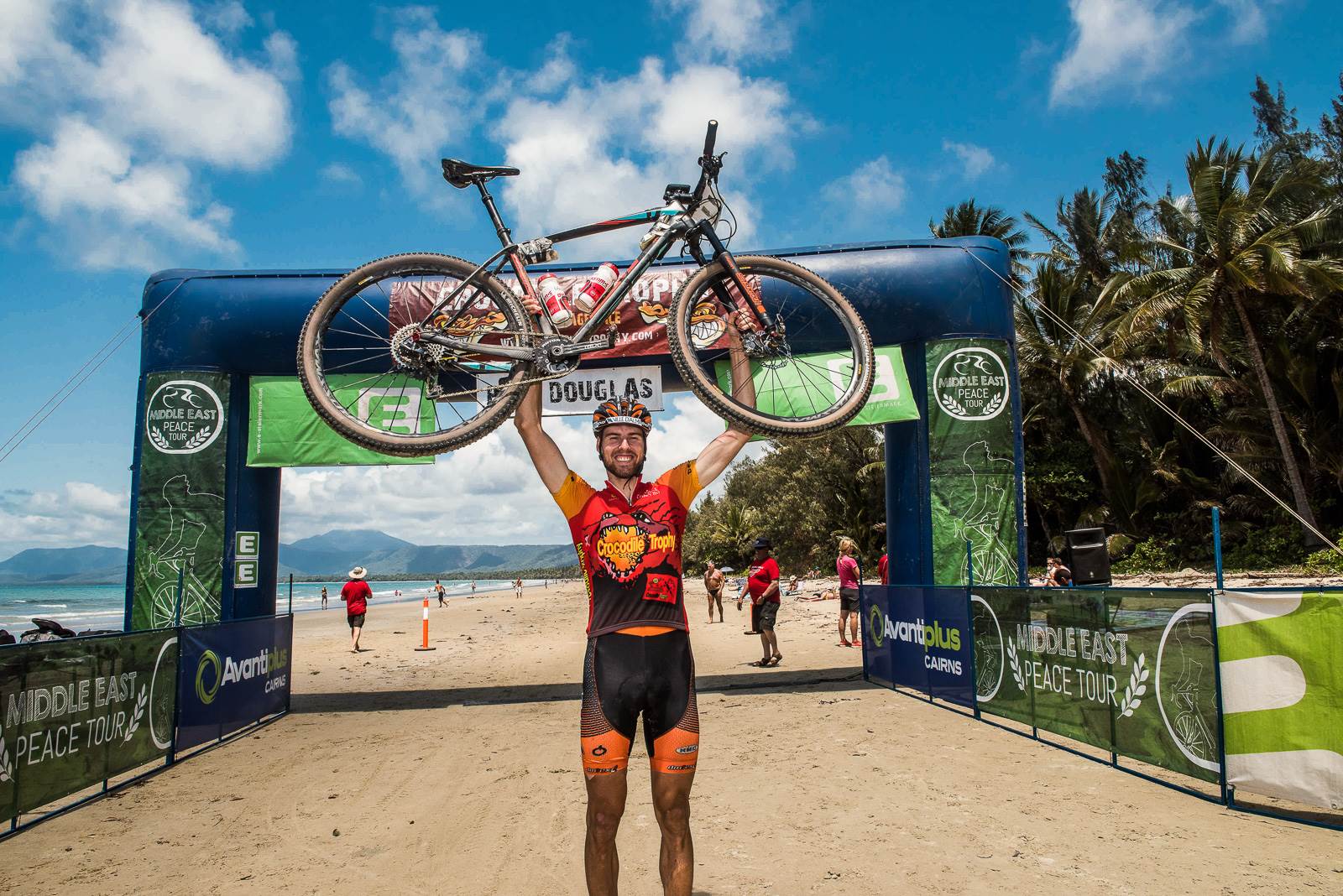
Race the Crocodile Trophy with Rocky Trail Racing
The beauty of a mountain bike stage race is how easy your day-to-day tasks are. You eat, ride, eat, sleep, and repeat. And as the Crocodile Trophy has the food and accommodation all rolled into one camp, with a mechanic, beer truck, masseurs and a race doctor rolled into one, much of what you need is always close to hand.
But when should you arrive? What should you wear? What should you pack? What should you pay attention to on each stage? All these things come with experience and that’s something that comes with experience. And having finished the Crocodile Trophy 8 times, Martin Wisata has experience in spades. So if you’re keen on the Crocodile Trophy but not planning and logistics, get in contact with Martin and Rocky Trail Entertainment to join their team for 2018.
rockytrailentertainment.com
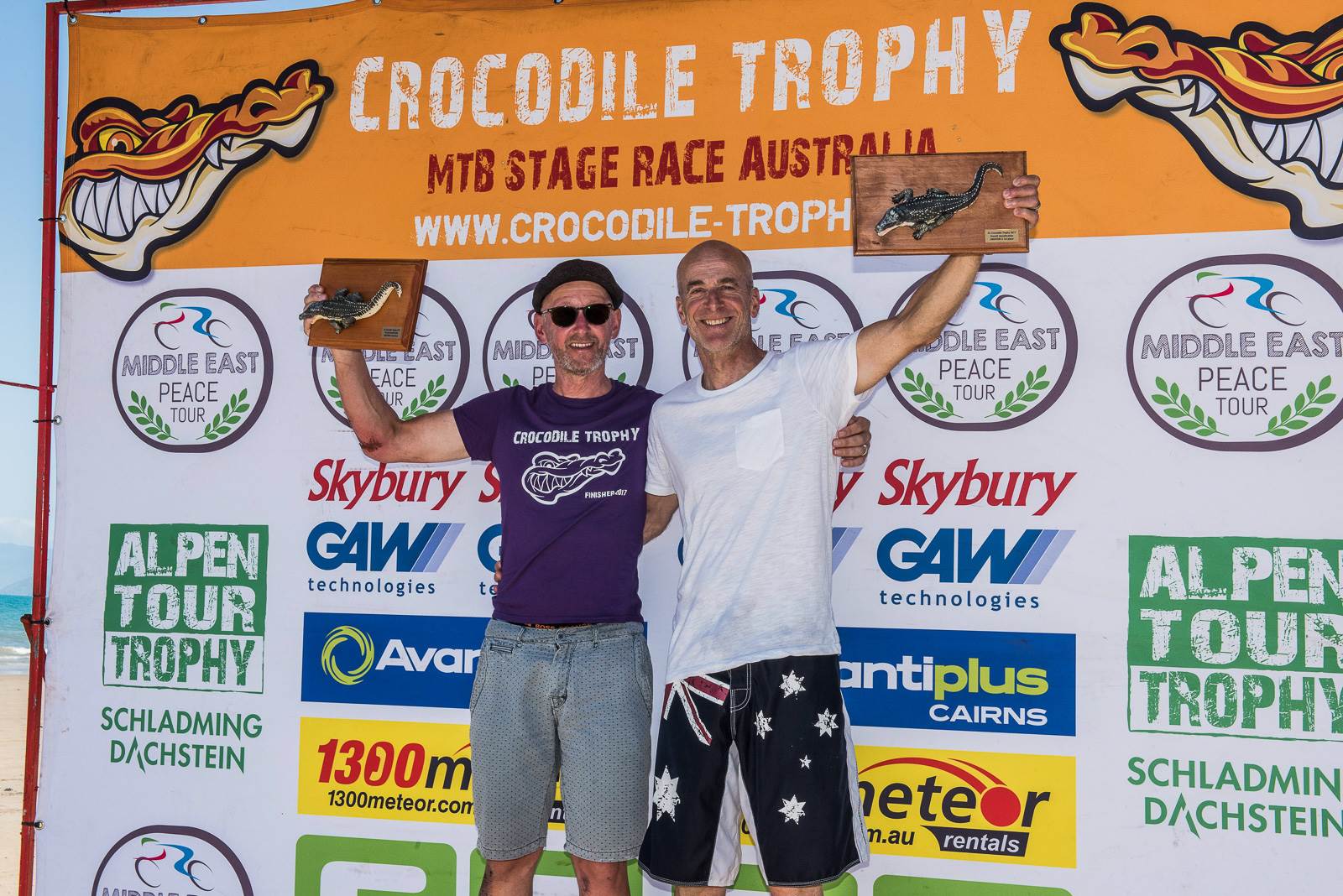
Willem Dijk
Holland
Apart from the elite racing, the Crocodile Trophy offers an outback experience whether you visit from Austria, Belgium, The Netherlands, or even an Australian capital city. Things are different in Tropical North Queensland, and especially in the Crocodile Trophy. With limited connectivity, there’s a need to switch off and interact with the environment. And for many of the people who visit, that’s a big part of what brings them here.
“Exactly one year ago, we had the idea to mix doing the Croc and visiting the family and travelling around in Australia, for five weeks,” said Willem Dijk, from The Netherlands.
“We are in the middle of the trip now. We were here for a week before the Croc and were lucky to see the World Championships. After the race, we have 14 days to go.” Dijk is travelling with his wife, and doing what many Australian road cyclists and mountain bikers do – mix a cycling adventure with a holiday on the other side of the planet. But why the Crocodile Trophy?
“We had seen the documentary on Belgian television, it’s about 30 minutes. I’ve seen it about 3 or 4 years in a row and seen the adventure. The thought to come was growing, and of course to do the mix with a holiday. We will rent a camper and visit friends and family in Brisbane and the Sunshine Coast.”
“When it was serious to come here I started training for it, about a year ago. I did two 200km races, and in the beginning of the year I was in Portugal, and also in Schwarzwald for a race. I’ve done several other events, and a lot of cycling on the road.”
As a television documentary drew him to the race, I’m curious as to whether Willem has experienced what he expected. Has the Crocodile Trophy delivered on what it promises?
“What I saw on television and read in newspapers and magazines was confirmed here. Now it’s real. The event, sitting here together, cycling, the adventure. It is what I expected. With 8 days, you have contact with a lot of people, and help people on the way. It’s good.”
That’s an apt summary. Spending 8 days mixing with the one group of people has a lasting social impact. It forges new friendships based on shared experiences, both hardships and highlights, and as Willem outlines, people working towards the same goal.
“I would certainly recommend the Croc for people after an adventure. Everyone is speaking with each other, we are all here for one thing, to finish the Crocodile Trophy.”
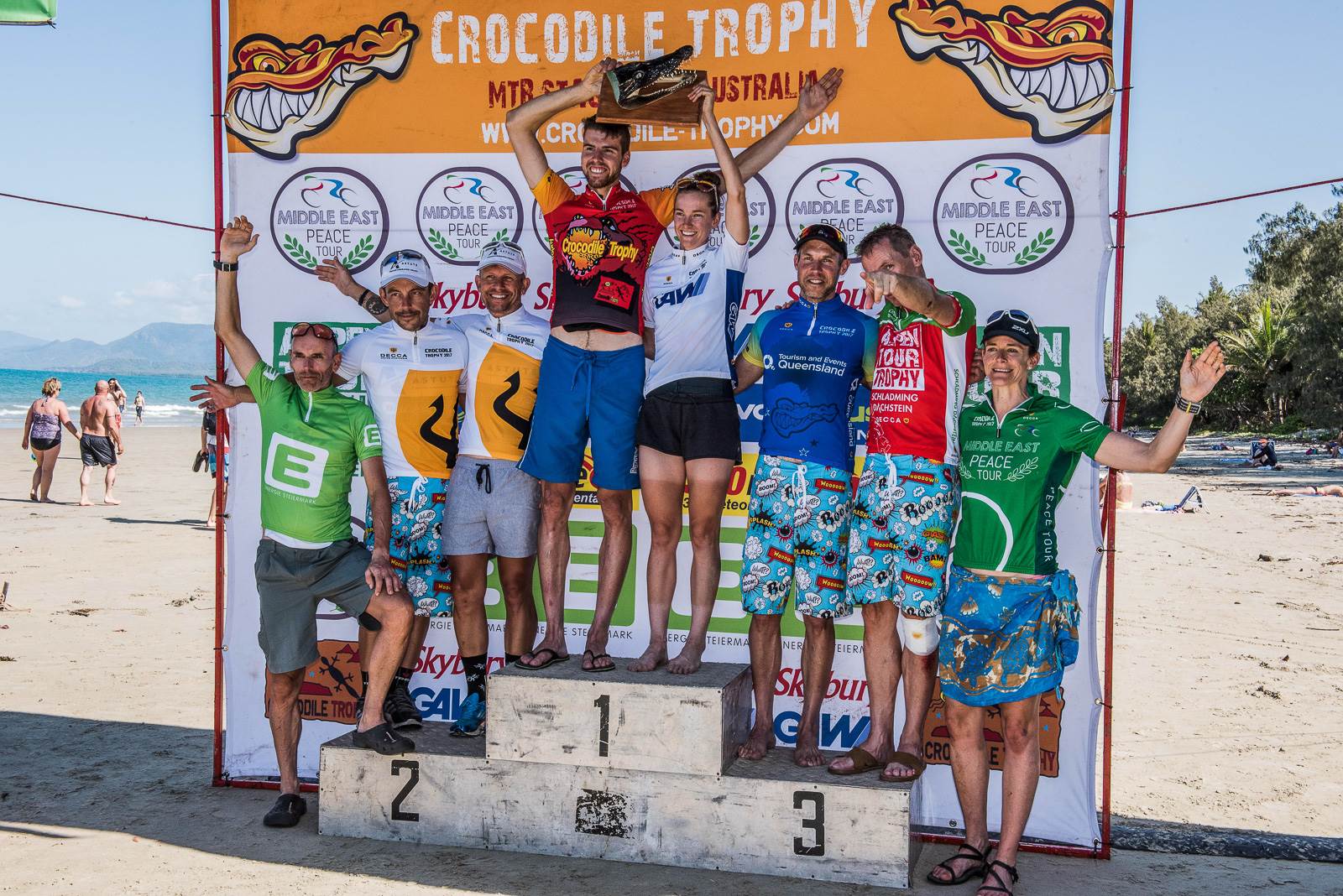
A NEW BEGINNING
In 2017, there was the start of a handover. Race owner Gerhard Schoenbacher has other projects including the Middle East Peace Tour, and Koenraad Vanschoren, who runs the popular Belgian Mountain Bike Challenge, was in Australia as the Race Director. Koenraad has also raced the Crocodile Trophy in 2015, and we discussed what the future might look like for the Crocodile Trophy.
“Our main goal is to get the Crocodile Trophy up again on a higher level and get more participants. It has the potential to be at least 100 participants. We will try to modernise the race a little bit. I still think the Crocodile Trophy has a big future ahead of it, and I will try to make it a big success.” The modernisation is an interesting point, and Koenraad also mentioned they wanted to advertise the race more and utilise social media for promotion. But when I think about my own experience at the Crocodile Trophy in 2011, to my experience in 2017, or even 2014, the difference is quite large. From stage length, to camp locations, food, amenities, and just how enjoyable the stages are. But Koenraad has found great growth with the Belgian Mountain Bike Challenge (BeMC) in a short time period – will that experience help?
“Honestly, I don’t know. It was a matter of doing the work and being there at the right time for BeMC. There was no such race in Benelux before. And when we started in 2012 a lot of people were asking for a race like that. The first year it was a big success and after that it kept growing and growing. What is the key to success?. I know it is a well-organised race. I know it has nice trails, a very good atmosphere – a lot like here at the Crocodile Trophy. We have 600 participants but you see a lot of people talking to each other. We have big elite riders to the less experienced riders. I think in mountain biking it is the only sport where a pure amateur can race next to a world champion. And that is something that attracts people.”
Running a race in remote parts of Australia is very different to running a race in the densely populated parts of Western Europe, but therein lies the appeal, says Koenraad.
“For us Europeans, Australia is still something special. Being somewhere so different is what attracts Europeans. Most come not so much for the race but also the adventure. I don’t think we want the Crocodile Trophy to become something like the Cape Epic. The adventurous element needs to remain. I think that attracts people. For European mountain bikers, the Crocodile Trophy is a bucket list race.”
Koenraad feels that for European riders, they need something special, an outback experience. And this seems at odds with what Australian riders want, which is mountain bike parks. So finding the right locations to get a good mix is part of future growth.
“The locations this year, like Tepon, were really good. That’s an area with a lot of opportunities to do other stages. Maybe do a stage in the Herberton Range National Park, and then the next day to Irvinebank which is totally different scenery. I think that’s very important for European riders, that they see the different scenery. For a European rider the Mt Mulligan stage was an outback experience. And that’s what they need. The thing that surprised me the first time, was that bike park races like in Atherton were popular. Australia is a country with the best terrain for real, natural marathon races. Lots of different terrain and beautiful old singletrack. The Atherton stage last year and in 2015 was a long cross-country race. Some people like it. Some people don’t like it. If you come from Europe to race a circuit race in Australia doesn’t make sense. I can’t say we wouldn’t go through the bike park – maybe 10-15km and then continue. It’s part of Australian mountain biking.”
That’s an interesting point. Bike riding is about a journey, going somewhere, and a long-distance mountain bike race should be a prime example of that, especially with the space we have available here in Australia. I’ve done a lot of marathon races and stage races, and the ones I’ve loved the most are ones that take you somewhere. Maybe it’s way out on a big loop and back again, or maybe it is point to point. I explain to Koenraad that even our marathon national championship is lap based.
“In my eyes that doesn’t make sense,” he says, and I’m left to agree.
We are yet to see the exact shape of the 2018 Crocodile Trophy, besides knowing the dates will fall again in October the 13th-20th, the opening lap-based cross country race in Smithfield is gone, and there are both hotel and tent options. The Crocodile Trophy will continue to evolve, and I for one will be keen to see how it changes over the coming years.
2017 – Results
Elite Men’s winner – Leandre Bouchard
Elite Women’s winner – Haley Smith
Amateur Women’s winner – Daniela Erni Ruoss
Amateur Men’s winners
A1: Cees de Ridder
A2: Alex Malone
A3: Erik Dekker
A4: Peter Urdl
A5: Marc Russenberger

